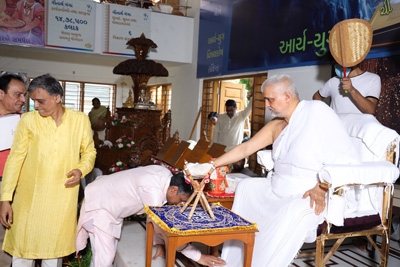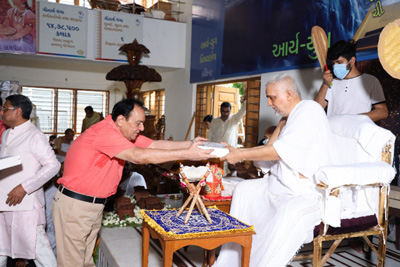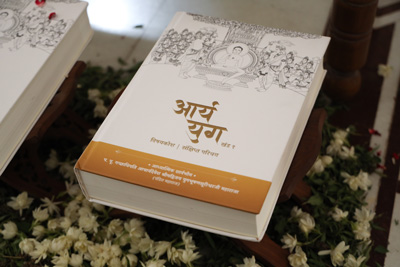Loading...
32+ YEARS OF RESEARCH WORK.
THE ENCYCLOPEDIC PROCESS
The encyclopedic process consists of classification, compilation, analyzation and interpretation of various scriptural subjects which results in an all-rounded research. Additionally, it is also important to present these subjects with relevance to present times.

DATA COLLECTION
Initially, more than 2,000 authentic & rare scriptures, various literature & magazines were collected from various repositories, archives and athenaeum. These were selected by obtaining various catalogs, lists from libraries worldwide based on 108 main subjects & 10,008 sub-subjects. The experts go through these lists & initiates the process of obtaining the selected literature.
The entire process of selection & procurement involves more than 12,000 man hours. However, these were obtained either in printed or handwritten form, of which some were in dilapidated and worn-out state. Also, various versions, publications of those scriptures were also obtained to do a comparative study.

DIGITIZATION
The entire knowledge source was required to be standardised as well as digitised in order to make it research suitable. Out of various versions & publications of selected scriptures, the most appropriate were chosen after a comparative study.
These scriptures were then digitised using various technologies such as optical character recognition (OCR), scanning and through manual entries. Further, a lot of care is taken to handle the original scriptures which are in worn out state & rare to find.

PROOF CHECKING
These digitised entries are further proof checked in various ways. The language experts ensure there are no grammatical errors while entries. In case if more than 3 errors are found in a page, the entire scripture is sent for re-digitisation. It is then passed on to the next level where the entire scripture is being verified word by word against the original scripture.
These digitised & amended scriptures are stored in the database in retrievable format. After going through this rigorous proof checking process, these scriptures are then passed for coding purpose.

CODING
The entire available literature can be scripturally classified into 4 types i.e. Dravyanuyog, Charankarnanuyog, Ganitanuyog & Dharmakathanuyog. To make it simple to comprehend, these 4 catagories are further extended in 108 main subjects & further catagoried into 10,008 sub-subjects which encompasses the entire Jain philosophy. Expert saints and well-versed pundits read every part of the scriptures; extract the core message, and distributes those into 10,000+ identified subjects by writing a code. Additionally, about 1,300 scriptures which are not yet digitised word to word are also been indexed or otherwise classified subject wise.
Apart from the scriptures, the codes are also given to pictures, illustrations & images. A team of experts also creates various charts & tree classifications based on the selected subjects. (A searchable database is created which consists of codes of scriptures, pictures, illustrations, images, charts, tree classifications, articles of research scholars & modern science, reference places in the library books of the identified subjects. In total this aggregates to more than 500,000 & is being enhanced continually.)

CLASSIFICATION & COMPILATION
Compilation: Out of this huge database, the references & codes of these selected subjects are being compiled. An expert ensures that the references which are related to the subject are also being compiled. Once the entire compilation is complete for a particular subject, the gist of the subject along with reference places shall be provided for further study & interpretation. Such process, which is more than a categorised encyclopedia, shall be completed for all 10,008 subjects.
Classification: The selected subjects by an expert shall further be classified in chronological order which shall help an expert to comprehend codes appropriately. For example, certain codes are being classified for various definitions of particular subject, certain codes for etymological derivations, certain for types, & so on. These are further compiled in an appropriate format which once interpreted by an expert shall provide a 360̊° view to an expert.
Recent Event
Aryayug Vishay Kosh unveiling ceremony.





Contact
5, Shrutdevta Bhavan, Jain Merchant Society, Paldi - 380007, Ahmedabad - India.
gitarthganga@gmail.com
+91 079 4003 4911
Follow Us

